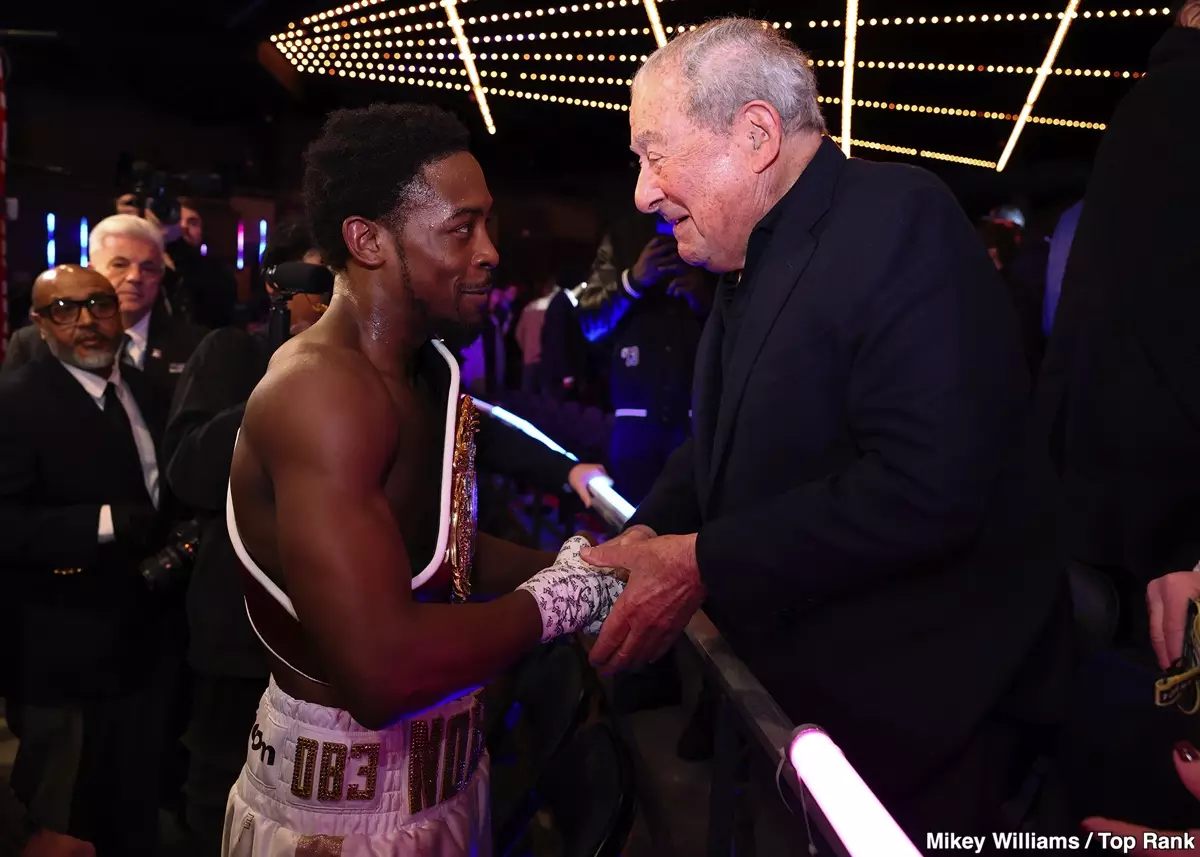In a striking display of power and skill, Keyshawn Davis made headlines last Friday night by claiming his first world title. The occasion, held at Madison Square Garden in New York, featured a fourth-round knockout of WBO lightweight champion Denys Berinchyk, marking a significant milestone for the 2020 Olympic silver medalist. The victory was celebrated, not just for the title itself, but also for Davis’s apparent rise in the boxing hierarchy.
However, beneath the surface of this triumph lies a narrative that has begun to raise eyebrows. While Davis’s success on the canvas is undeniable, his approach to his boxing career has led many to question whether he possesses the competitive spirit and willingness to take risks that have historically defined great boxers. Unlike legends such as Sugar Ray Leonard or Tommy Hearns, who engaged in high-stakes bouts early in their careers, Davis seems to prefer a more cautious path, hand-picking opponents that pose little risk to his burgeoning reputation.
Many boxing enthusiasts have noted Keyshawn’s unwillingness to prioritize challenging matchups, especially when it comes to fighting proven talents like Andy Cruz. Instead of pushing his boundaries by seeking fights that could enhance his profile, Davis appears content to remain within the safety of the lightweight division, choosing to face fighters who are less daunting, such as Berinchyk, Miguel Madueno, and Jose Pedraza.
This conservative strategy mirrors a trend seen in some recent fighters who opt for safer fights to secure titles rather than seeking glory through competition against the best. Critics argue that this pattern of behavior diminishes the significance of his accomplishments and tarnishes his potential as a future face of boxing. The comparison with past titans of the ring is stark; for instance, Leonard’s early bouts against champions like Roberto Duran and Wilfredo Benitez set the stage for his ascent to greatness, something Davis has yet to replicate.
The potential trajectory of Davis’s career could draw a parallel to that of Adrien Broner, a fighter who took a similar approach in his ascent through boxing ranks. Both fighters exhibit a proclivity for carefully managed matchups, with Davis seemingly following Broner’s blueprint of generating interest through showmanship and strategic media engagements rather than fierce competition. There is a thin line between becoming a marketable star and merely a fighter riding the coattails of more authentic successes, and the distinction could define Davis’s legacy in the long run.
Furthermore, the comparison is not merely anecdotal but also rooted in statistics. Broner, despite his controversies and mixed results in the ring later in his career, amassed titles at a young age—a feat Davis could mimic if he continues on his current path of selective matchmaking. Keyshawn’s calculated choice of opponents might yield immediate success, but it risks relegating him to a status where he’ll forever be viewed as a champion of convenience rather than one of merit.
As Davis continues to climb the ranks, challenges await him that could further shape his career. His physicality—a build that is evolving beyond lightweight—might eventually necessitate a move up in weight classes. Competing against more formidable opponents like Gervonta Davis or Vasily Lomachenko could provide him with the opportunity to either cement his legacy or expose flaws in his approach. The reluctance to climb higher in weight out of fear of loss could prove to be a double-edged sword.
The voices from within the boxing community echo the concerns surrounding Davis’s hesitance to engage with stronger competition. Statements from respected figures like Floyd Schofield Sr. implore fans to consider the implications of Davis’s current trajectory, warning that merely capturing titles against perceived weaker opponents risks casting him as a fighter focused on fleeting accolades rather than a lasting legacy.
Keyshawn Davis’s current standing as a champion has undeniably positioned him within the boxing world, but his reluctance to embrace risk raises pivotal questions about his future. The boxing landscape has shown repeatedly that lasting greatness is often reserved for those unafraid to challenge themselves against the best. As he aims for commercial success, Davis stands at a crossroads, where his next moves could either solidify or undermine his legacy. If he hopes to be recognized alongside boxing legends rather than fleeting stars of the moment, Keyshawn Davis must embrace challenges head-on and evolve as a fighter willing to face the strongest opponents in the sport. The choice is his, and how he navigates this pivotal stage in his career will ultimately determine whether he becomes a defining figure in boxing history or merely another footnote in its annals.

